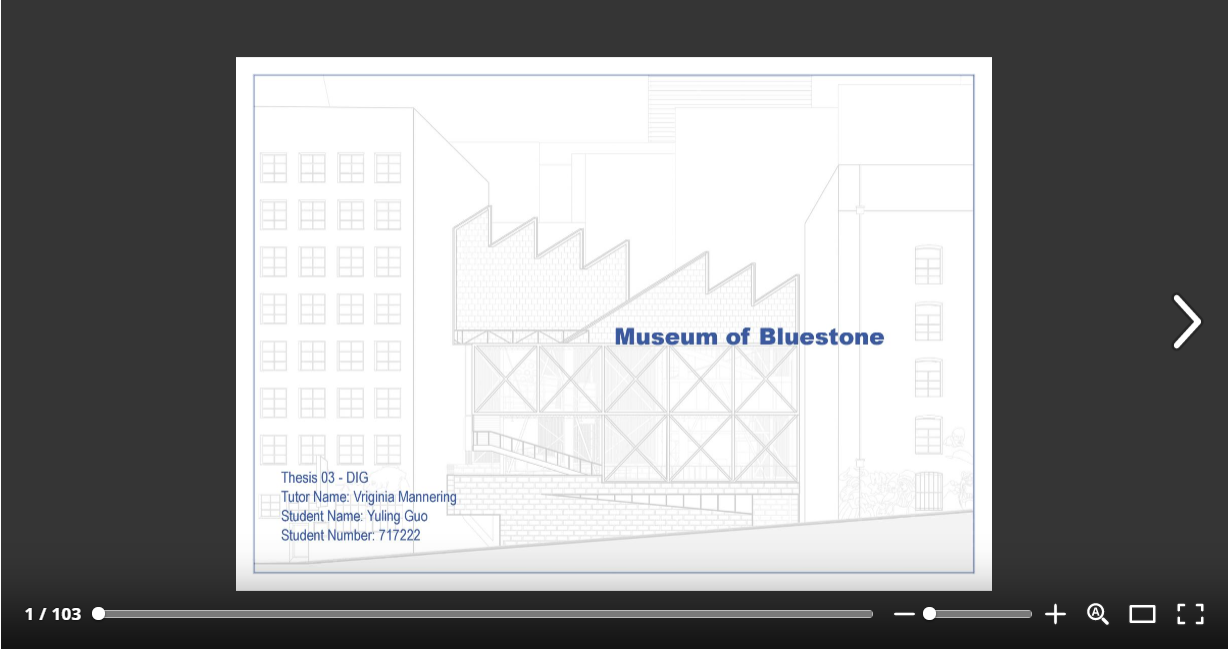Yuling Guo
Around 4.5 million years ago, volcanic explosions forced lava flows from Victoria’s western plains, across to the where the Merri Creek and Yarra River now lie. The lava cooled and formed varieties of bluestone – a thick plate of material that underlays the current city. This project, a Museum of Bluestone, tells the story of one of Melbourne’s key, characteristic building materials – and illuminates the relationship between deep-time and deep-structures, and current urban and cultural manifestations.
Melbourne and bluestone are inextricable. From the start of Melbourne’s Goldrush, bluestone became one of the city’s key building materials; it was plentiful and cheap, durable. The stone was used for some houses, but also key infrastructures - pavements, walls, gutters, and culverts. We can see and touch the bluestone in Melbourne every day; however, it’s very ‘ordinariness’ conceals the complexity and richness of its extractive histories.
The museum of bluestone asks visitors to contemplate the materials city-builders use. They take millions of years to form, they are destroyed in an instant. As the city grows with their use, the surface is mined and destroyed through its extraction. Fortunately, people started to use recycled bluestone and build some abandoned quarries into parks, gardens and reserves because they realized this issue.












